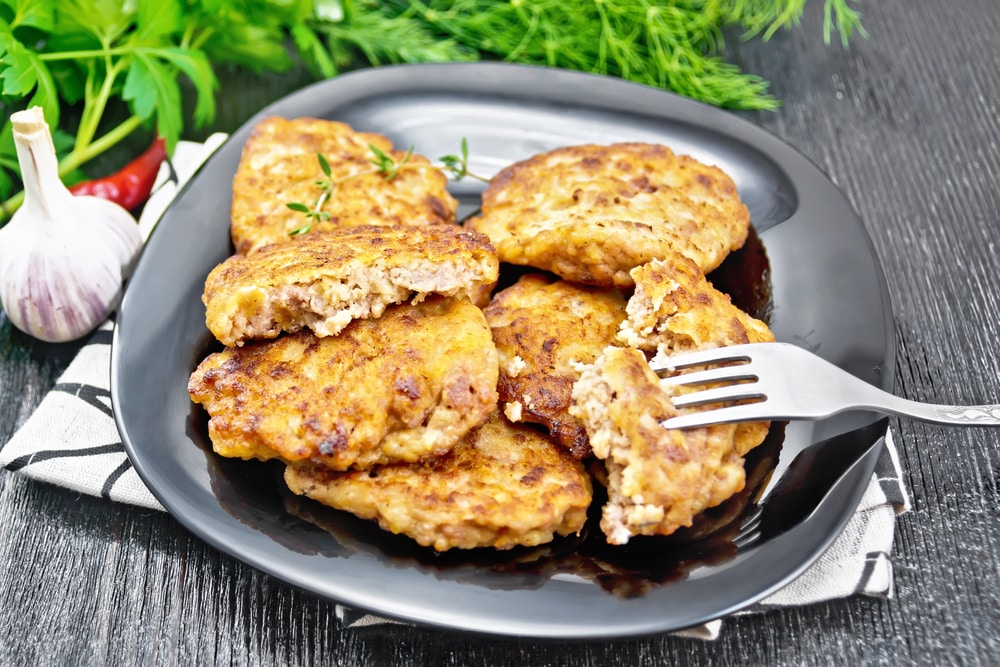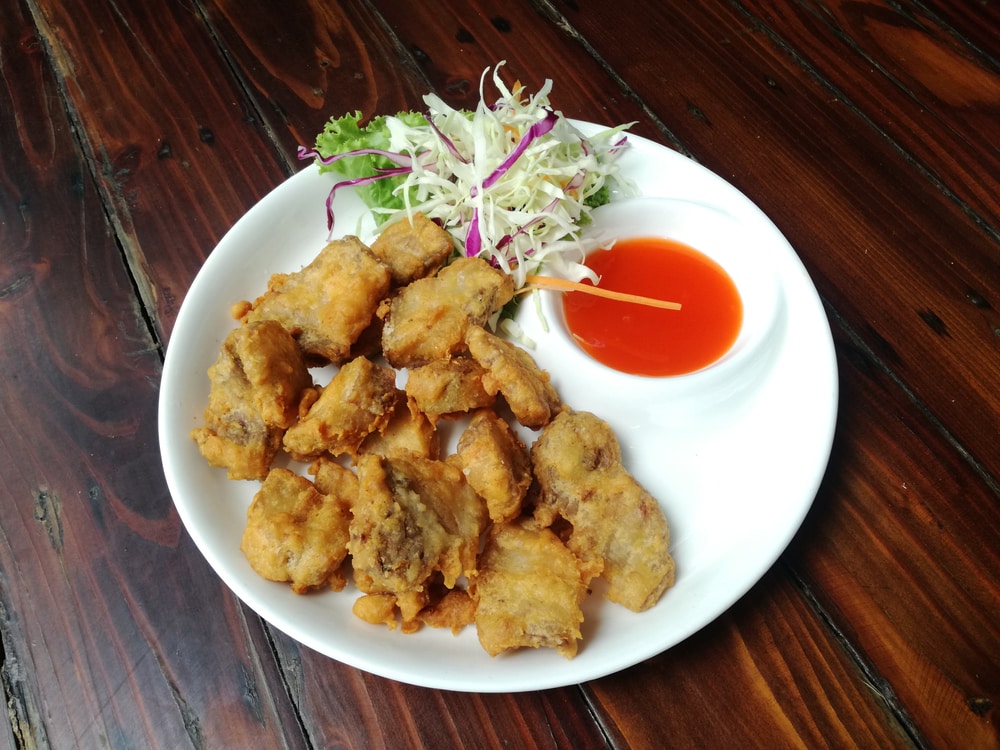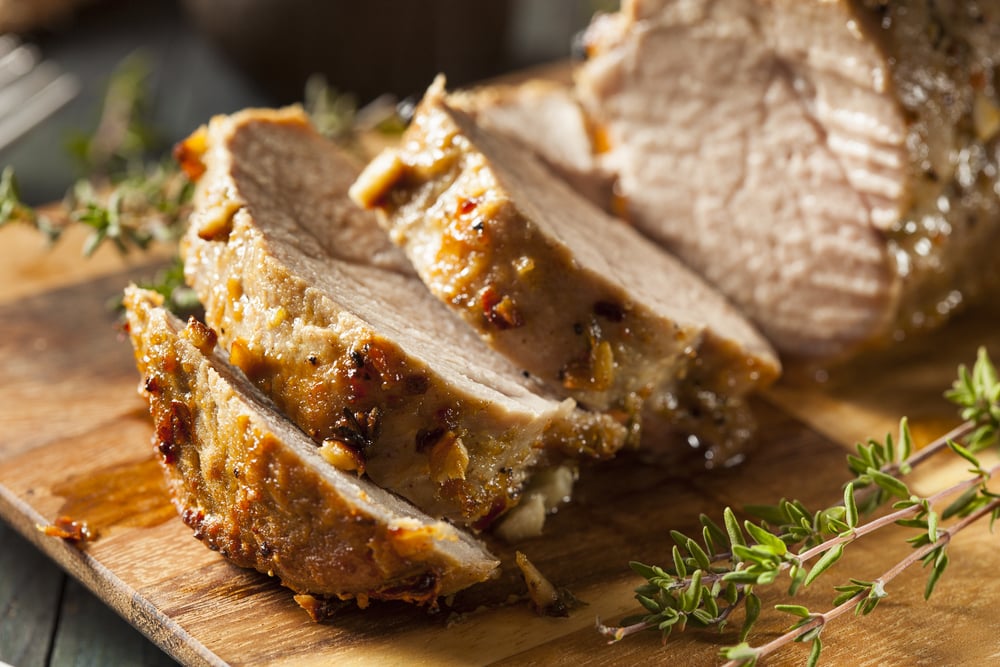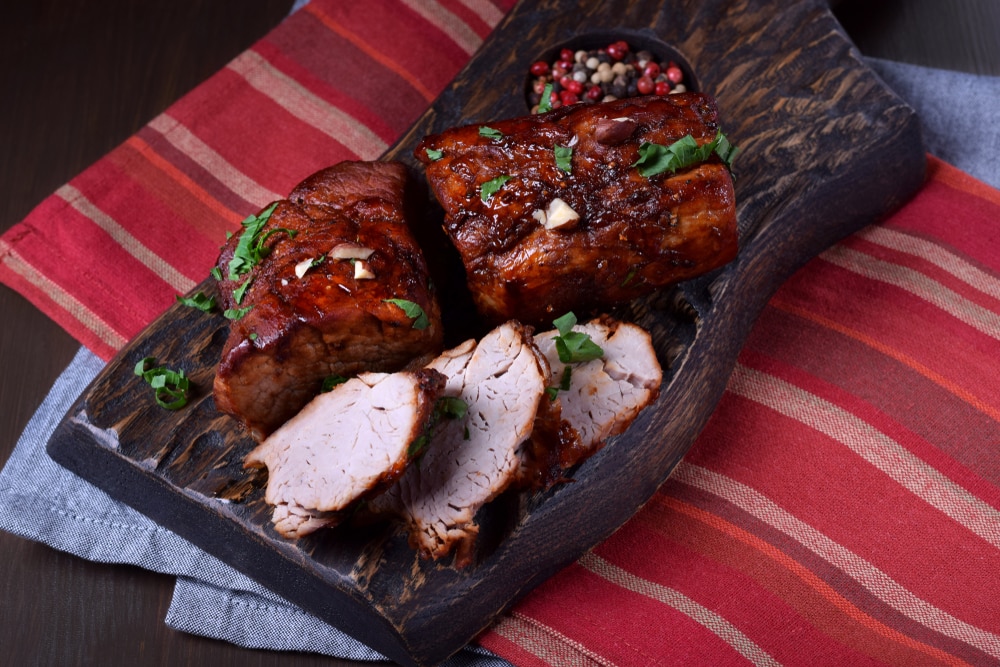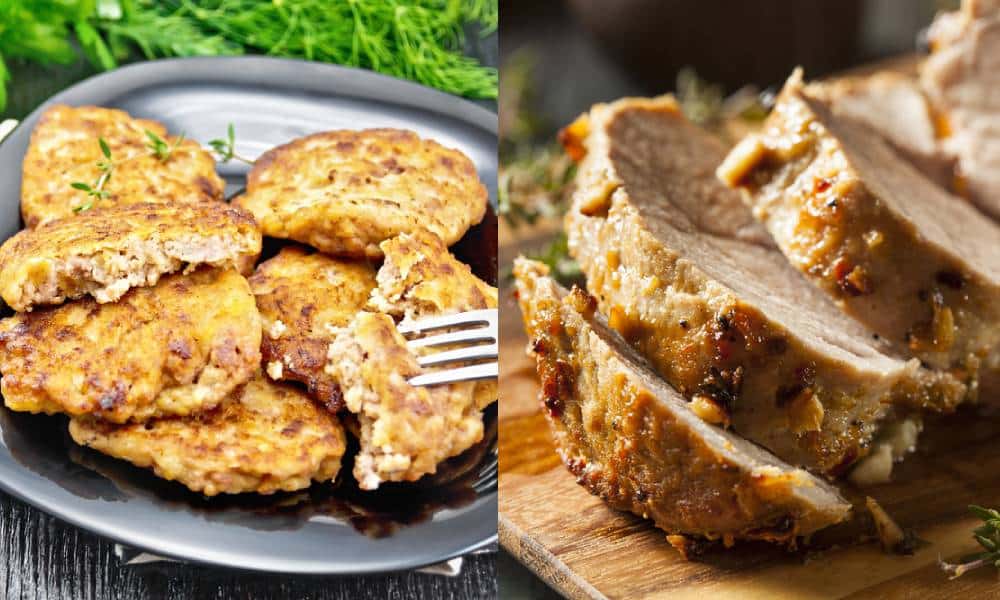
There are many ways to prepare and eat pork, but two of the most popular recipes without a doubt are pork fritters and pork tenderloins.
Both varieties are delicious on sandwiches, burgers, pitas, and as a topping a range of other recipes. However, not many people know the exact differences between these two key ways of cooking pork.
In fact, some think that they’re the same thing. We’ll be breaking down the differences in a comprehensive comparison between pork fritter vs. tenderloin.
Pork Fritter Vs. Tenderloin Comparison
| Pork Fritter | Pork Tenderloin | |
| Taste | Subdued Pork Flavor Relative To Other Ingredients | Mild Pork Flavor Reminiscent Of Ham Without Intense Saltiness |
| Cut Of Pork | Various Cuts Including Pork Shoulder, Pork Roast, And Ground Pork, With Pork Tenderloin Most Often Used | Boneless Pork Tenderloin |
| Texture | Firmer, Granier And Crunchier | Lean And Juicy |
| Cooking Time | 10 To 20 Minutes | 30 Minutes Or More |
| Affordability | Pork Fritters Stretches The Pork Further Making More Meals | High Priced Cut Of Pork |
Pork Fritter vs Tenderloin: What’s The Difference?
As previously mentioned, there are actually more than just a few differences between pork tenderloin and pork fritters.
These differences are noted below in full detail in order for you to decide which one is the better option for you.
Pork Fritter
No pork lover can resist a tasty, crispy pork fritter cooked to perfection and left with just enough juiciness to offset the satisfying crunch. Here’s an overview of the main characteristics of pork fritters.
Taste
Pork fritters aren’t made from unprepared pork tenderloins but this barely impacts the flavor of the pork. It’s still exactly the same meat.
The only thing that’ll make a difference to the rich pork taste is the other ingredients added to the pork fritters.
Herbs, spices, and the quantity of other vegetables like onion and at times garlic will all change the flavor so keep this in mind if you’re in the mood for pork alone.
Cut Of Pork Used
Most pork fritters are prepared using a cut of tenderloin which is then pounded to as thin as possible. Pork fritters can also be made using ground pork, leftover roast pork, or pounded pork shoulder.
Texture
Even though most pork fritters are made from pork tenderloin, you can expect a much different texture. The extensive pounding process transforms a tenderloin into a fritter.
This means that while relatively tender, fritters have a more stodgy, grainier feel as compared to a cut of pork tenderloin.
Fritters are also far drier, requiring careful attention to preparation techniques and the other ingredients to come out juicy. Extra fat is often added.
Cooking Time
Pork fritters are another meal that can be ready within 20 to 30 minutes.
Pounding the pork tenderloin for traditional pork fritters can be time-consuming but once you’re used to the process, your meat should be ready to cook in 10 minutes or less.
Once pounded, it takes another 10 minutes or so to put together most fritter-based meals and sandwiches.
That’s a total of 20 minutes for preparation and cooking as opposed to 30 minutes or more when cooking up a tenderloin alone.
Affordability
You’ll always end up getting more pork fritters out of your meat but this doesn’t always translate to greater value for money.
It all depends on how much pork tenderloin you choose to use as a topping or ingredient in your meals.
However, in general, pork fritters give you more bang for your buck, stretching far further than cooked meat alone.
Pork Tenderloin
Supremely tender and just juicy enough when cooked right, pork tenderloin is a go-to cut for countless pork fans around the world.
Few can ignore the calling of a well-cooked pork tenderloin, delivering a taste that rewards like ham without the savory, intense saltiness. Let’s take a closer look at the main characteristics of pork tenderloin.
Taste
As a very lean cut of pork, pork tenderloin is packed with flavor but it doesn’t have any fat to help the meat retain juiciness. It tastes a little less salty but comes way juicier than brined ham.
The leanness means that flavor is lost quickly when tenderloin is overcooked, however, when prepared properly the mild but satisfying pork flavor is exceedingly versatile.
Cut Of Pork Used
Pork tenderloin is a narrow boneless cut of pork extracted from a muscle that runs across the backbone of the pig. It’s not the same as pork loin which can come boneless or bone-in, extracted from the back of the pig.
You’ll find pork tenderloin to be one of the leanest cuts of pork available, and a variety that’s often stored for up to three months before cooking.
Texture
The average pork tenderloin arrives at just over a pound with barely any visible fat. The best way to ensure that a tenderloin stays juicy and tasty is to cook it quickly, but brining and marinating also works.
Pork tenderloin should not be chewy, and if it is, this means that you haven’t removed the silver skin first.
Cooking Time
The cooking time for pork tenderloin depends on the recipe and how it’s being prepared.
The average preparation and cooking time for most tenderloins sees most cooks complete within half an hour flat if the kitchen is set up and ready, but it really hinges on the exact meal.
Oven baking a tenderloin takes just under half an hour while pan-frying it after pounding can take as little as 10minutes.
Affordability
Pork tenderloin is one of the most expensive cuts of lean pork, arriving at an average of approximately $4 per pound.
When it comes to pork tenderloin vs. pork fritters, you get slightly less value out of serving the tenderloin unprepared but it really depends on your serving size and the type of meal you’re making.
Must-Try Fail-Proof Pork Fritter Recipe
Here’s a fail-proof pork fritter recipe using pork tenderloin for you to try. Serve atop a sandwich or burger, or in any other taste way you can think of. They’re even great as a stand-alone snack.
Ingredients:
- 4 Tablespoons of Flour
- 4 Tablespoons of Breadcrumbs (Preferably Panko)
- 1/2 Teaspoon of Salt
- 1/2 Teaspoon of Black Pepper
- 1 Large Egg
Method:
- Combine the flour, salt, and pepper in a small bowl big enough to hold your pork tenderloin
- Beat the egg in another shallow bowl
- Place your breadcrumbs in a third, separate bowl
- Cut your pork tenderloin crosswise into four separate slices
- Pound each slice using a meat tenderizing mallet until it reaches roughly a quarter of an inch thick
- Dip each tenderloin into flour first and coat both sides well before shaking off the excess
- Dip each floured tenderloin directly into the egg mixture, and then straight into the crumbs
- Pan the crumbs onto the pork tenderloin lightly to help it adhere everywhere
- Heat a large frying pan/skillet with enough oil to coat the bottom over medium heat
- Cook the crumbed pork tenderloin for roughly 3 minutes on each side, turning when it turns golden brown
Allow the oil to drain by placing the fried tenderloin on paper towels and then serve in your preferred method or eat as-is!
Conclusion – Pork Fritter Vs. Tenderloin
When it comes to being a mouthwatering taste sensation, there aren’t many significant differences between the two.
However, when we look at a concise comparison of pork fritter vs. tenderloin, it becomes clear that they’re two completely different meals suiting specific occasions and tastes better.
Both are great as toppings for sandwiches and burgers and can be served as party snacks but most find that pork tenderloin is the better option when in the mood for comfort food.
Whereas pork fritters are ideal for fried food fans.
